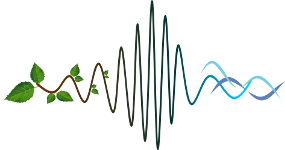Proxy indicators of biodiversity exploiting acoustic techniques offer the prospect of mapping variability in biodiversity across a range of spatiotemporal scales. Studies in the terrestrial domain have brought to light the potential for rapid and cost-efficient biodiversity appraisal, and have also highlighted the need for signal conditioning to limit the influence of abiotic and anthropogenic sources. In marine ecosystems, the differing vocal taxa, acoustic propagation characteristics, and abiotic contributions call for a reassessment of the applicability of acoustic diversity indices and requirements for signal conditioning. Here, we discuss how these indices might be applied to marine habitats, taking examples from a long-term acoustic monitoring study in Massachusetts Bay, a year-round marine mammal habitat in the Northwest Atlantic. Recordings were made using an array of autonomous recorders, monitoring continuously over a 6-year period. The variability of acoustic diversity indices is assessed with regard to marine mammal and fish detections, analyses of spectral probability density, and meteorological and oceanographic parameters. Given the influence of anthropogenic and abiotic sources on each index, we examine implications for signal conditioning in comparable habitats. Finally, we consider diversity indices in the spatial dimension, taking into account the strong interrelationship with frequency in the marine context, and examining the role of sounds in this ecosystem at landscape scales.
|
|
|
|
Wednesday
18
Noise II
› 14:15 - 14:30 (15min) › Rouelle Conference Hall
Acoustic diversity indices in marine ecosystems: long-term patterns, spatial considerations, and abiotic influence
|
| Online user: 1 | RSS Feed |

|

 PDF version
PDF version